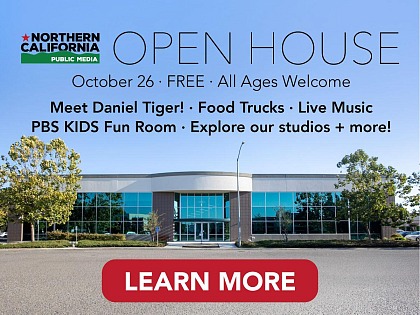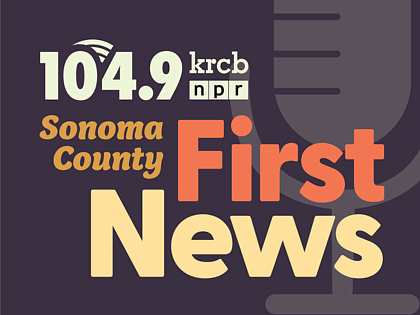lights, rear-ended a bus and blocked crosswalks and bike paths. In one incident, dozens of confused cars congregated in a residential cul-de-sac, clogging the street. In another, a Waymo ran over and killed a dog.
"We don't really need traffic cones to show how vulnerable they are," says the Safe Street Rebel organizer.
Both Cruise and Waymo say their vehicles are far safer than human drivers and compared to humans they've had relatively few incidents. They say they've driven millions of driverless miles without any human fatalities or life-threatening injuries. An Uber self-driving car, operating in full autonomous mode and with a safety driver in the vehicle, killed a pedestrian in Arizona in 2018.
 A Waymo driverless car gets coned in San Francisco.Dara Kerr / NPR
A Waymo driverless car gets coned in San Francisco.Dara Kerr / NPRSafe Street Rebel isn't the only group that's had issues with the autonomous vehicles. San Francisco's police and fire departments have also said the cars aren't yet ready for public roads. They've tallied 55 incidents where self-driving cars have gotten in the way of rescue operations in just the past six months.
Those incidents include driving through yellow emergency tape, blocking firehouse driveways, running over fire hoses and refusing to move for first responders.
Autonomous vehicles are programmed to be overly conservative
Ziwen Wan, a Ph.D. candidate in computer science at University of California, Irvine, has studied why driverless cars may be acting this way. He used open source data for his research, so his findings aren't based specifically on Cruise and Waymo. Wan found that ordinary objects on the road can lead to dangerous driving behavior. Part of this, he says, is because the cars are programmed to be overly conservative.
"The software can make the autonomous vehicle behave as conservatively as possible because a safety violation would be very serious," Wan says. "But this may lead to concerns on the other side, like in some cases, even though it's safe it will fail to drive normally."
That abnormal driving includes abrupt halts, swerves, erratic behavior or just stopping in the middle of the road.
"The traffic cone protest is an example of how things in the real world can really confound machines, even ones as sophisticated and finely tuned as this," says Margaret O'Mara, a history professor at the University of Washington who studies the tech industry. "It's a reminder that in this very high-tech world, the most low-tech things can literally put a wrench in the machine."
Despite the bumps in the road, both Waymo and Cruise are rapidly expanding their robo-taxi programs throughout the U.S. Waymo is already giving rides in Phoenix and is testing with human safety drivers in Los Angeles and Austin. And Cruise is offering rides in Phoenix and Austin and testing in Dallas, Houston, Miami, Nashville and Charlotte.
Meanwhile, in San Francisco, members of Safe Street Rebel continue to go out at night and stalk the vehicles one cone at a time.

 Live Radio
Live Radio




